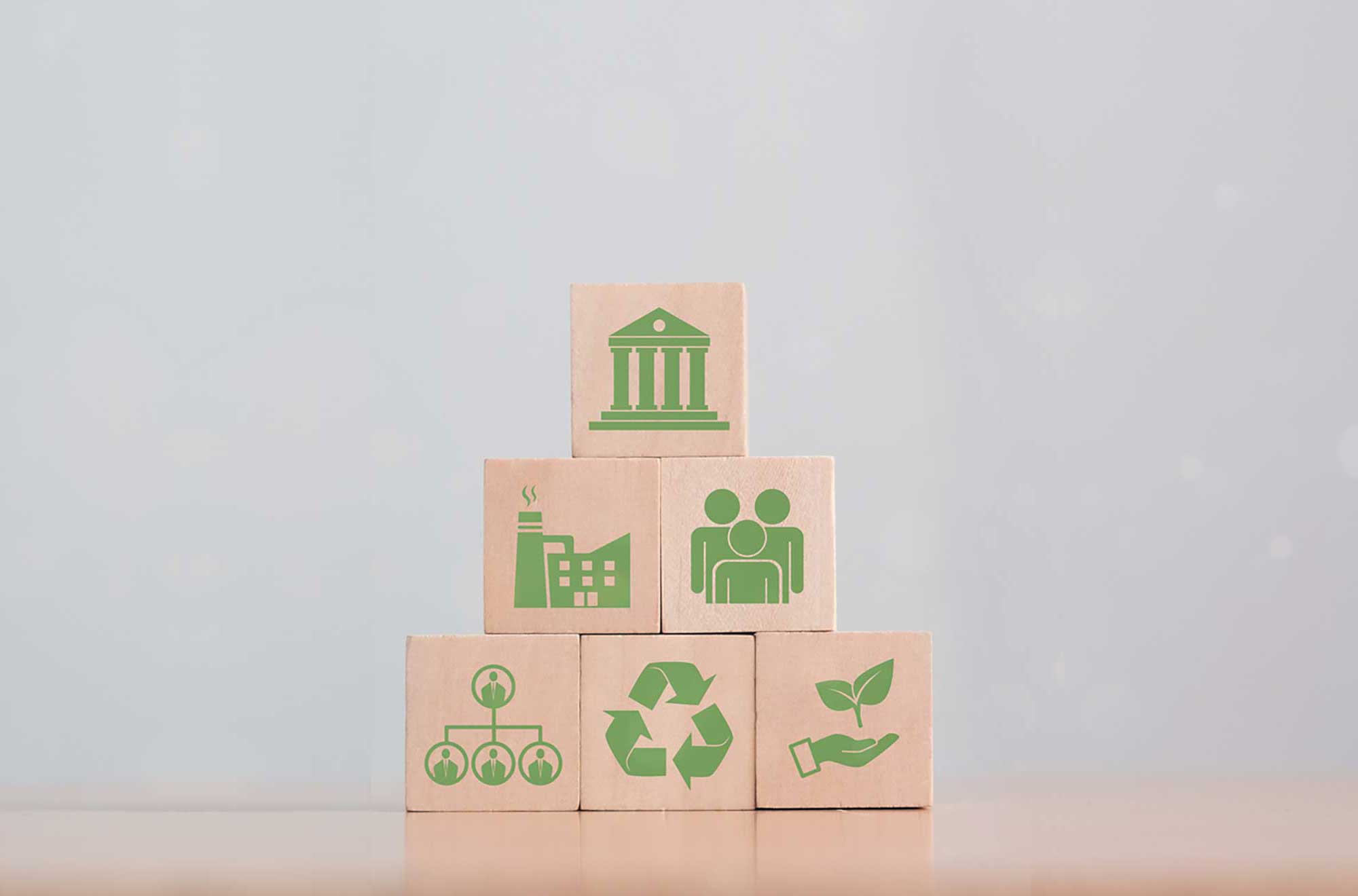The carbon market aims to reduce greenhouse gas emissions and preserve the environment.
There are two types of carbon market:
- The regulated market - regulated and managed by governments and central institutions that control its proper functioning. In this type of market, regulations determine which organizations are covered and the rules to be followed. These rules define the limit emissions (tons of CO2 equivalent) assigned to organizations and the verification methodology, in order to guarantee the reliability, coherence and traceability of the information. The most important regulated market is the EU ETS - European Emissions Trading Scheme, which is maintained by the European Union.
- The voluntary market - is created by organizations with a view to trading carbon credits and offsetting emissions through these credits (equivalent tons of CO2 that are no longer emitted into the atmosphere). These credits can consider the emissions sequestered or avoided by forestry activities or by replacing dirty energies (resulting from burning fossil fuels) with clean sources, such as renewables. These organizations act on their own behalf and define the requirements and criteria to be considered by those involved in this type of market (the voluntary market is more open and allows companies, NGOs, institutions, and citizens to participate). Currently, some countries have developed their own voluntary markets which are regulated by official bodies.
To participate in this type of market, organizations must meet the requirements defined by them. In the case of the regulated market, these criteria are defined through the issuance of legislation and regulations (the organization may not be covered). In voluntary markets, on the other hand, the criteria vary from market to market. In both cases, however, one of the typical criteria for participation and the allocation of emission allowances or credits is the guarantee of verified information. Verification by an independent entity that follows international standards methodologies is common.
- What strategies can companies adopt to reduce carbon emissions?
Reducing carbon emissions by companies can be done in a variety of ways and will depend on the sector of activity in which they operate, for example by reducing energy consumption, switching to low-carbon technologies (decarbonization) or opting for renewable energies.
Considering the sequence of stages in the life cycle of a product or service, actions or solutions can be implemented that minimize the impacts and emissions of fluorinated greenhouse gases right from the start, by opting for lower emission means of transport, promoting remote meetings, adjusting logistics circuits to avoid unnecessary routes, choosing recycled or recyclable materials, more efficient equipment, boosting renewable materials, among others.
A more sustainable process for manufacturing products or providing services includes solutions for optimizing processes and increasing effectiveness and efficiency. Examples include the proper maintenance of equipment, the use of raw materials using automated and highly efficient equipment, the reduction of non-compliant products by optimizing the raw materials used and reducing the waste produced, improving energy consumption and the origin of energy.
As soon as the product or service is made available on the market, the impact and sustainability of the design choices begin to be felt, both in the use phase (for example, by extending the life cycle of products) and in the final phase of their life cycle (recycling, reuse, and less impactful end-of-life treatments).
If there is no more room to reduce carbon emissions, organizations can resort to buying carbon credits that stimulate the generation of carbon sequestration projects and more projects to apply technologies that avoid carbon emissions.
- How is this trading done?
Like the financial markets (stock exchange), this market trades emissions and credits in tons of CO2 equivalent, so 1 ton of CO2 equivalent becomes a financial and tradable asset.
In both types of market, verified emissions and credits are traded and assigned to organizations:
- In the case of the regulated market, countries and organizations have emission limits to comply with (they can emit, i.e., "pollute", up to the defined limit). If this quota is not met, the remainder can be sold on the carbon market. Otherwise, organizations can use the market to buy permits to emit more than their limit.
This method of trading emissions on the carbon market is called the Cap and Trade system. There is a limit (cap), i.e., a maximum ceiling to be able to emit polluting gases, and at the same time it is possible to pollute more than this limit by purchasing emission permits (trade).
- The voluntary market considers emissions offsets, through the purchase of credits to compensate for emissions from their activities or services that cannot be mitigated. It is based on sequestration projects (typically afforestation and reforestation) and projects to avoid carbon emissions (such as decarbonization and energy transition to renewable energies).
Similarly to the verification of reported emissions, the credits will also be subject to validation, which allows for a high degree of confidence in the information provided (measurement, reporting and verification of greenhouse gas emissions and removals from the atmosphere). A project to be validated undergoes a careful assessment that guarantees the feasibility of implementation and that the goals are measurable, identifiable, and scalable in relation to what would happen if the project did not exist.
- Will the carbon market continue to grow?
The carbon market will continue to grow both nationally and internationally. Many of the voluntary markets are developed at an international level and allow carbon credits to be traded between organizations in different countries.
The development of carbon markets makes it possible to regularize transactions in emission allowances and carbon credits in a transparent and reliable way that is generally accepted at international level, stimulating the implementation of actions leading to the reduction of emissions and the energy and ecological transition to a low-carbon economy.
The financial incentive (for governments, companies and consumers) encourages good practices and the financing of decarbonization and carbon sequestration projects. Many of these projects involve greener practices and technology (hydrogen, for example), stimulating the creation of more jobs and a more sustainable economy. Carbon sequestration projects, in turn, allow natural capital to be valued, by making more funding available for afforestation and reforestation, for example.
This type of system is still evolving in order to close some loopholes that could create discrepancies and inequalities in terms of the disparity of resources at international level, which could encourage richer countries not to reduce their emissions since they can buy carbon credits, or limit poorer countries because they have no way of reducing their emissions without damaging their economies.
Even so, regulating the carbon market creates a scenario of legal certainty and increases the reliability of organizations. A carbon market with the participation of the government, private entities and specialized committees guarantees a technical contribution to the whole system. Companies' decisions need clear rules and criteria for monitoring and steering, in order to define the best strategy for investing in technology that reduces the emission of carbon dioxide and other gases.
It's a very significant market that brings benefits to governments, companies and the global population.
Pedro Fernandes
Climate Change Business Developer















